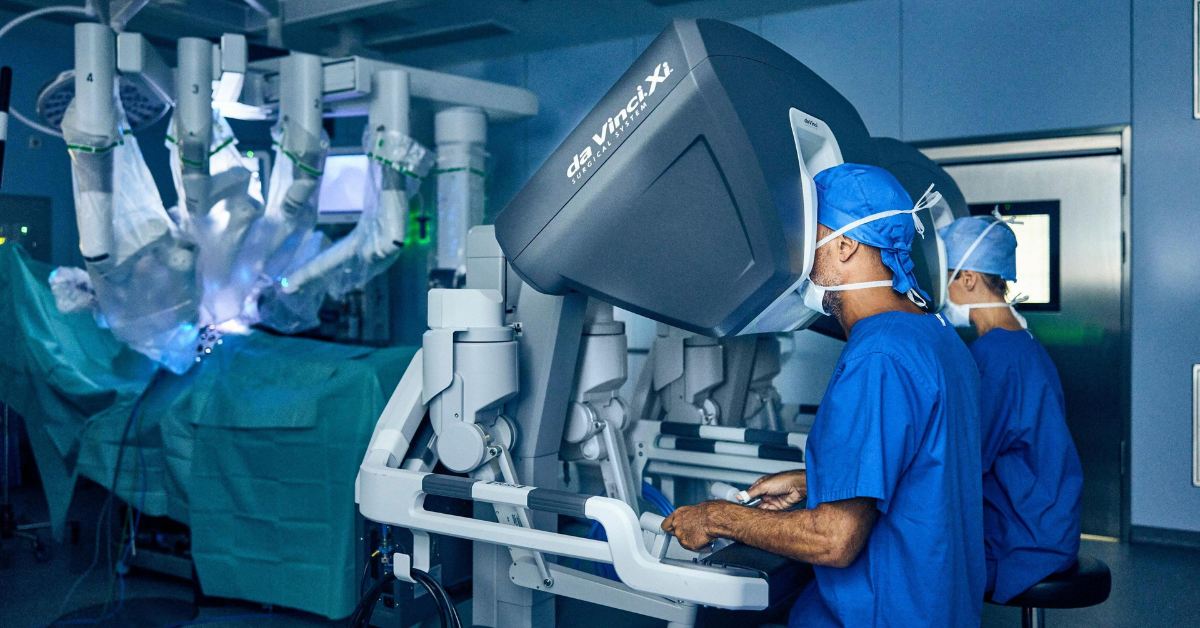
How Robotic Surgery is Transforming GI Cancer Treatment
Gastrointestinal (GI) cancers such as stomach, colorectal, pancreatic, and oesophageal cancers are some of the most challenging to treat because of the intricacies of the digestive system. Traditional surgery, good as it may be, often comes with prolonged recovery times, post-operative complications, and added risks for infection. But there is a new technology that is changing the treatment of GI cancers.
- Robotic-assisted surgery has revolutionized the treatment approach, particularly towards GI cancers. Here's how this technology is making this particular treatment more accessible than others.
Why Traditional Surgery Needed A Makeover
For decades, open surgery was the treatment of choice for GI cancers. Although it had its advantages, open surgery also resulted in longer hospital stays, to say nothing of requiring extensive invasion of the body, i.e., larger incisions, which resulted in extensive scarring and a longer recovery time.
Laparoscopic surgery was introduced as a substitute with fewer incisions and faster recovery. Laparoscopic surgery was less flexible, less of a three-dimensional sense, and less accurate. The need for an even more advanced, patient-centered technique is what created the impetus for robotic-assisted surgery.
How Robotic Surgery Works
When one says "robotically assisted surgery, it does not mean that it is performed by a machine. The robot is manipulated by a highly trained surgeon who sits in a cutting-edge console. The technology can be likened to an extension of the surgeon and his/her expertise. This is good, particularly in intricate surgeries such as GI cancer surgery where precision is never compromised.
Here is how it works:
- Surgeon-Controlled Console: The surgeon is seated in front of a console where he can have a close-up, high-definition, 3D view of the area of operation.
- Robotic Arms with Miniature Instruments: Instead of enormous cuts, small instruments are employed, passed through tiny openings, handled by robotic arms. The instruments mimic the human hand movement but with greater precision and flexibility.
- Tremor Control Technology: While human hands can develop minor tremors, robotic technology represses unnecessary movement so that incisions are steady and precise.
- Minimal Invasiveness: The enhanced dexterity and precision minimize damage to the surrounding tissue, making recovery simpler.
What Makes Robotic Surgery Useful in Treating GI Cancer
The below list of advantages makes robotic surgery a more rational choice in treating something as serious as GI cancer:
- Unmatched Precision: With its sharp and sensitive motions, the robot device pushes the efficiency of what a human hand can provide to the limit. This translates into more precision and less damage.
- Less Blood Loss: Blood loss is minimal as compared to open surgery because the incisions are smaller.
- Fewer Complications: Since the surgery is minimally invasive, this lowers the complications of the surgery, such as infections and blood clots.
- Quicker Recovery & Shorter Hospital Stay: Patients of robotic-assisted GI surgery recover quicker, experience less pain, and go back to work earlier.
- Less Scarring: Tiny incisions leave less visible scarring, leading to more acceptable cosmesis.
These advantages make robotic-assisted surgery a game-changer in GI cancer treatment.
Which GI Cancers Are Treatable with Robotic Surgery?
Not everyone with GI cancer requires robotic surgery, but in the majority of instances, it has been a successful replacement for open surgery. Following is a list of GI cancers treatable with robotic surgery:
- Oesophageal Cancer: The minimally invasive nature of robotic surgery makes the removal of the tumour within the oesophagus safer and more precise with minimal harm to normal tissues.
- Stomach Cancer: Robotic surgery provides surgeons better access to tumours, enabling them to resect harmed tissue while preserving as much stomach function as is possible.
- Colorectal Cancer: Open operations in colorectal cancer are highly invasive. Robotic surgery reduces damage to intestines, and healing happens at a faster pace.
- Pancreatic Cancer: The pancreas is located in a vulnerable area with intimate contact with large blood vessels. Robotic surgery provides convenience and precision in the removal of tumours with fewer risks.
Whereas this list of GI cancers can be cured through robotic surgery, not every kind of patient may be suited for it. A surgeon-gastroenterologist evaluates parameters like cancer stage, tumour location, and the patient's overall health in order to decide the best approach.
Is Robotic Surgery the Future?
Despite having a plethora of advantages, robotic surgery also has some drawbacks like:
- Cost Factor: Robotic surgery can be pricey due to high equipment costs and the need for special training. But as technology is made more widely available, the cost will decrease.
- Availability: The sophisticated robotic surgical systems are not widely available in all hospitals, so some patients will be limited in their access to this type of surgery.
- Surgeon Training: Robotic-assisted surgery requires special training, and not all surgeons are trained to perform this kind of procedure.
A Revolution in GI Cancer Treatment with Robotic Surgery
Robotic-assisted surgery is revolutionising the treatment of GI cancer, offering greater precision, quicker recovery, and improved patient outcomes. By minimising trauma and enhancing surgical accuracy, this new technology is paving the way to a safer, more efficient future in the treatment of gastrointestinal cancer.
To avail world-class minimally invasive procedures for late-stage illnesses, professional counselling is essential in the case of these patients. Renowned surgical gastroenterologist from Chennai, Dr. Santhosh Anand, has specialised expertise in performing successful robotic surgery with high rates and providing top care through outstanding surgery.

